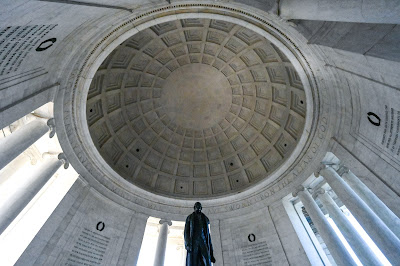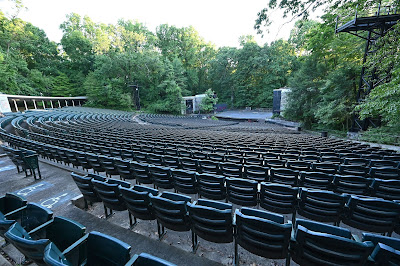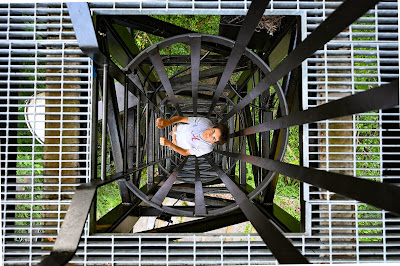Iconic

street light design has long been part of A-list cities like New York, Boston and Paris. Paris,
mais bien sur, naturally, is nicknamed, "The City of Light." And in the United States, New York indeed, might just be the streetlight capital, where there are more than 34 models, most with intricate ironwork, with names like "The Corvington" and the delightfully-named 24A-W "Bishop's Crook." The street light design, not surprisingly, has added to Gotham's mystique and sense of place.

Not surprisingly, there are even
Web sites devoted to preserving New York's streetlight heritage.
The Big Apple actually held a design contest in 2004 to standardize and unify the more than 300,000 streetlights in the city, mainly with an aim to
ending the tyranny of the banal 1960's era "form-follows-function" cobra head light.
The cobra head light, otherwise known as a Westinghouse OV25 Silverliner, first designed in 1957, is still a staple in many cities, especially Washington D.C. For many years, streetlight design in a "no-frills" government town like Washington meant cobra heads rearing up everywhere.
Oddly enough, they fit well amid the acres of Brutalist concrete of the 1960s and 1970s as the federal government needed to expand its bureaucracy quickly. And as confidence in city management waned in the Marion Barry years, more concern was understandably paid to getting burnt-out streetlights replaced quickly rather than what they looked like.

That's not to say Washington didn't have its own iconic design. The Washington Globe and its bigger brother, the "Twin-20" was, and still is a recognizable staple along Constitution Avenue, New York Avenue and other historic routes. "The Washington Globe is the most pleasing design, architecturally," the city's Fine Arts Commission declared in 1980.
But decades of neglect and disrepair took its toll on a Washington icon. Part of which was due to cost of the globes. A glass globe was the hardiest design, and didn't yellow when exposed to sunlight, but cost more than $300 each and were a danger to cars and pedestrians alike if the heavy, inch-thick glass shattered. The District sent its inventory of glass globes to a dumpster more than 20 years ago.
Replacements for the glass were far from perfect. Polycarbonate globes were tougher, could be bought for less, but yellowed when exposed to sunlight and the lights lost their luminosity. They only last about 5-10 years to boot. Acrylic globes didn't yellow, lasted longer, about 10-15 years, but they weren't cheap either, about $125 a globe.

Indifferent administrations, and the District's subordinate relationship to the federal government also contributed to the lack of appreciation of such uniqueness. During the energy crisis of the 1970s, the Carter administration urged electricity savings. At the White House's prompting, many federal agencies in town disconnected street lighting and eschewed illuminating government buildings, save the Capitol, the Lincoln and Jefferson Memorials, and the Washington Monument.
The issue of streetlights in the District played a role in one of the more tragic, and galling incidents in the city. According to the DC Inspector General's report on the death of former
New York Times editor
David Rosenbaum in January 2006, inadequate street lighting along Granmercy Street was a
contributing factor in both his attack and the inability of responding police, firefighters and EMTs in determining the seriousness of Rosenbaum's condition, who was presumed to be drunk, rather than a victim of a robbery with a serious head injury which proved fatal.
While treating Rosenbaum, firefighters needed to turn on side floodlights of their engine to illuminate the scene, the inspector general's report said. "The area was dark, even with the fire (engine)'s lights on," the report said.
Even before Rosenbaum's death, attention had begun to focus on the dismal state of DC's 62,000-plus streetlights and their design. In 1998, the city
adopted streetscape and sidewalk standards for downtown DC. Streetscape standards required that builders of commercial properties, among other things, incorporate Washington Globe streetlight design.
And in 2005, the city followed New York's lead and initiated its own
streetlight design committee which identified so-called "Special Streets" and "Historic Streets" to upgrade streetlight design as funds permitted. "The historic significance of the City must be reflected through all aesthetic elements including the appearance of streetlights," the committee declared in March 2005 in its final report.

Still, city administrators will freely admit that not every "Special" or "Historic" street will get the upgraded lighting, given other more pressing budget priorities amid an economic downturn. Teardrop lights cost as much as $600, compared to $200 for a cobra head light. But DC recently used Recovery Act funding to
replace outdated streetlights along the Dalecarlia Parkway in Northwest. The Dalecarlia Parkway is one of 120 "Special Street" corridors the city has identified for upgraded lighting, including Wisconsin and Connecticut Avenues, MacArthur Boulevard, and the roads making up DC's borders with Montgomery County and Prince Georges County.
But where the city is lacking funds, some of the Business Improvement Districts are stepping up. The Downtown DC BID has also used its funds to pay for new pendant lights, such as the one above seen at 12th and F NW downtown, as well as Washington Globe lights around Gallery Place. In addition, the National Park Service included new "Twin 20" lighting as part of their $10 million
remake of Constitution Avenue to be completed in March.
Former Mayor
Adrian Fenty also made it a priority for a portion of DC's new streetlights to be green, as well as iconic. The District uses 60.7 million kWh annually and has a lighting bill of about $3.6 million, according to the Metropolitan Washington Council of Governments. The new Metropolitan Branch Trail along the CSX-right-of-way includes nineteen solar-powered
LED streetlights. The District is also
using $1 million in Recovery Act money for new LED lights in alleys.
Washington D.C. redevelopment news.



















































 The
The 


